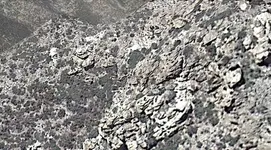UncleMatt wrote
I would like to ask where any of you would go to find research material that would definitively resolve this one way or the other for you personally. If you could have access to any currently unavailable archive, library, database, or private collection, which ones would those be?
Probably the best archive would be the one posted by Springfield in Seville, Spain, and we could add the Archivo General de la Nación in Mexico city. However this could be frustrating, for it is not at all certain that many mines or the products of them (bullion) were officially declared to the government, even though legally they were required to. Also we are rather late comers to this search, many earlier treasure hunters had access to all the documents held at the various missions, which they were free to take or buy, cheap so it is very unlikely that any original documentation about illicit mines is going to turn up, unless from the personal collection of old time treasure hunters.
Actually I don't know what more you could do, from the "legend" or story of lost mines to being able to stand in the very mines of story as at Salero, if this is not enough (and clearly it is not enough for some people) I don't know what sort of "proof" would change that situation.

A Catholic study listed some mines which the Jesuit Order owned and operated openly too, plus some gold and silver bullion were found in Jesuit missions in Baja, which Galvez stated had not been declared as required.
Almost forgot this too but our Jesuits were hardly the only Order whom were out digging for precious metals, and an example of a lost mine which was once just a story that you can literally stand in today, the once-famous lost Mojave mine west of Quartzite. This was supposedly originally opened by the Franciscan padres working out of Bicuner near Yuma, and after the disaster there the mine was held secret by the Mojave tribe for over a century. A lucky prospector followed the chief of the tribe to the general area, then found the old trail to the covered mine. You can see it from the highway about six miles west of Quartzsite AZ today.
One more thing, but our amigo Cactusjumper has taken exception that we are never "telling the whole story" in our posts. This is a debate over whether Jesuit treasures are real or not, so in a sense it would be unrealistic to try to present the WHOLE picture, when we are trying to convince others about this question. It would add nothing to prove there were and are Jesuit treasures, to include a lot of text describing the poverty of father Kino, and besides those personal vows of poverty have nothing to do with the Order.
Good luck and good hunting amigos, I hope you find the treasures that you seek.
Oroblanco






